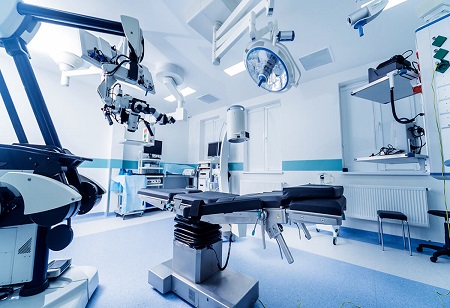The
Medical Device industry is regulated heavily and hence
regulatory agencies in all the countries around the globe have to ensure their medical device is safe to use. While in the US it should prove FDA compliance, the other countries across the world should must prove ISO Compliance. Also, designing a medical device is a complex process which needs requires detailed documentation and there should not be any minute error. Also, comprehensive risk management & traceability for compliance fundamentally play a central role in medical device development & this should be considered in every stage of the development.
Medical device firms need risk management solutions that are customized to their requirements, today. While Risk management should not only be ingrained inappropriate documentation but it should also be in the logical, digital data elements which feed into design input as well as verification & validation and hence seamless integration of the aforementioned risk elements & files leads to end-to-end risk.
Surge in innovations coupled with advancement in
emerging technologies in the medical device sector have brought about several changes in the regulatory segment along with the release of new mandates & modification of existing ones. Companies that are operating in this landscape should now make sure geo-specific compliance as well as prompt response in the emerging regulatory drivers. These evolving regulatory requirements can be addressed using new-age technologies such as AI and ML and facilitate companies change the processes to make sure they get the highest standards of compliance. But, to take that 1st step in this direction, the companies will have to start by investing in a cost-effective integrated regulatory framework which will support the proof of compliance. It is highly essential in understanding all the granularities & prioritize accordingly although there are several use cases of AI & ML in the industry.
While technology would facilitate in bridging numerous gaps for the organizations that are in the landscape by making sure the required
vigilance to grow as per the compliance requirements, a few of the areas of deployment comprise managing data, maintaining a dynamic repository for regulations, and rendering alerts for changes. Following are some areas where technology would help streamline for the medical device organizations going ahead.
360-degree view
An AI-based app can help in easily maintaining a repository of global regulations as well as guidance documents and can render updates on information related to regulatory pathways for a particular geography, upcoming regulations, & a comparison of various geo-specific regulations.
Creation & submission of documents
Artificial Intelligence-based solutions can extract data from various sources such as journals, regulatory databases, DMS (in-house), and several other texts for creating documents for regulatory submission with the help of NLP technology. This offers speed as well as accuracy to the process. An AI/ML-based solution can be utilized to the core to regulatory agencies for market clearance for auto-submit related documents.
360-degree compliance check
Rather than conducting periodic offshore as well as onsite audits Artificial Intelligence or Machine Language-based regulatory solutions can monitor processes, products, as well as supply chains constantly in order to make sure the alignment with product-specific standards, regulatory requirements & information security and this enables firms to proactively work on the non-conformities as well as prevent heavy fines.
Risk assessment
Artificial Intelligence-based applications are used in analyzing several data sources for providing real-time alerts. These are used for providing such alerts based on the risks to patient safety from the products, & other threats that are related to security in phase of product sustenance. These can also be used to analyze several other industries & suggest applicable risk control measures for implementing in the design & development phase. And, lastly it can also render suggestions related to corrective & preventive actions for non-conformities.
The road ahead
The truth is the medical device sector is not going to be the 1st in automating compliance processes but finance, and other highly regulated industries, have found value in automating the regulatory frameworks already. Therefore, now it is time for the medical device sector to learn from various use cases in these industries & implement them to their benefit. Apart from being cost-effective, automation can enhance processes & workflows as well, and this will facilitate post-market surveillance with faster resolution.
The time is not too far away where AI-based regulatory applications will be handholding the person responsible for regulatory compliance in performing their roles & responsibilities even more diligently.
